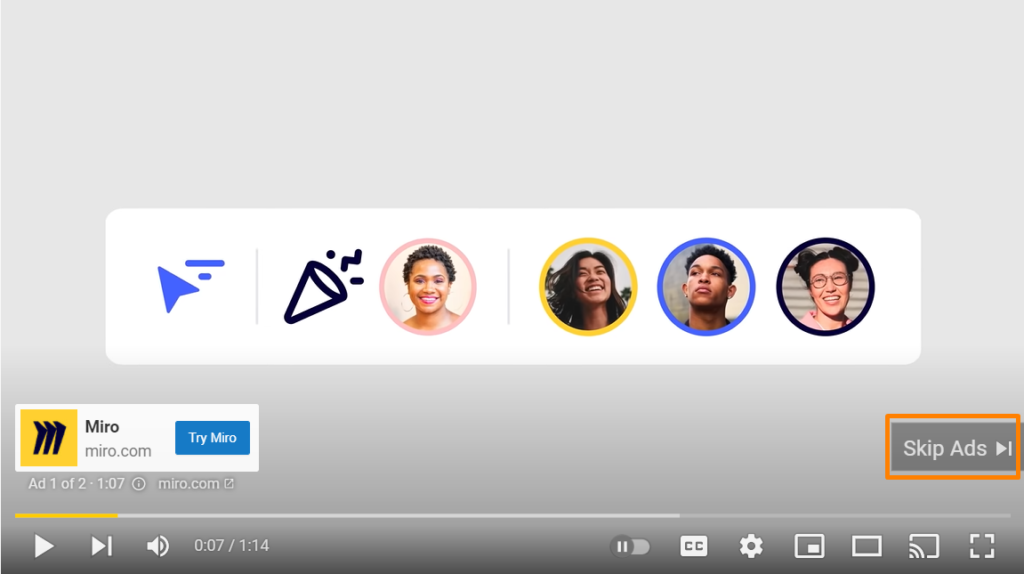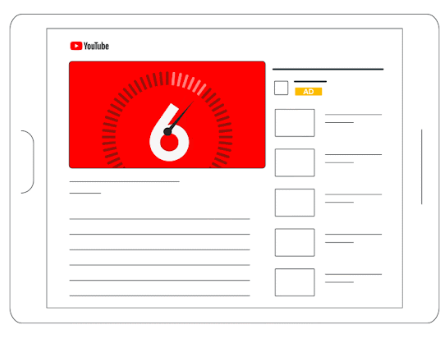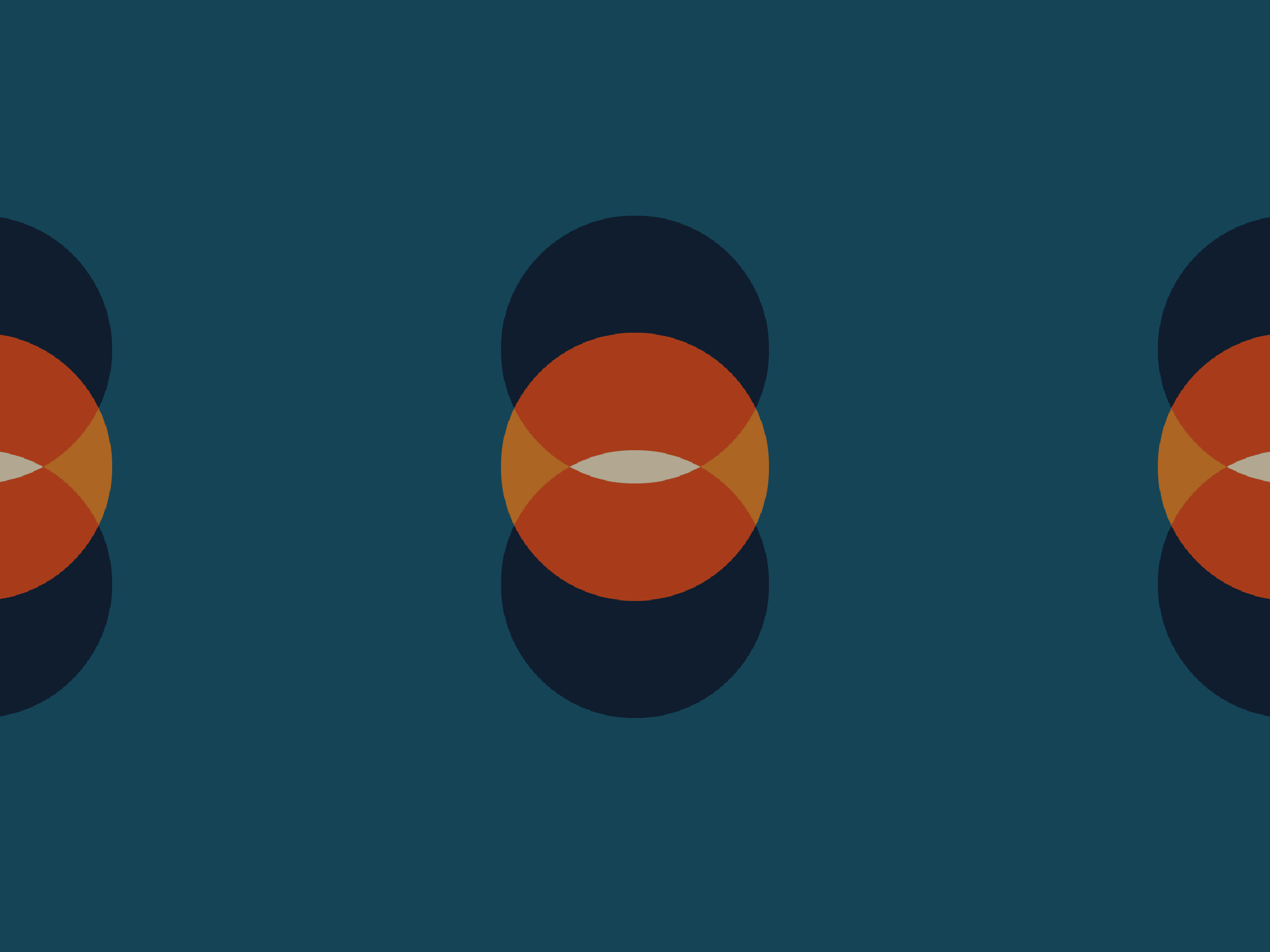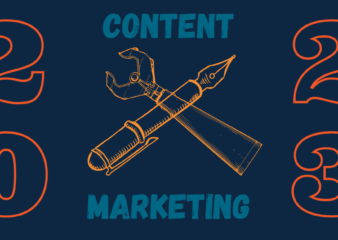For years Facebook has been the most popular social media site, but it may be getting ready to lose its crown. According to a 2021 Pew Research study, 81% of U.S adults report using YouTube, while only 69% use Facebook. YouTube gets over 22.8 billion visits per month, placing them right behind Google. It’s estimated that 82% of global internet traffic in 2022 will come from video streaming and downloads, so marketers can expect YouTube’s user base to continue to grow.
YouTube’s popularity makes it an essential part of any digital marketing strategy, but understanding the differences between various ad options can be a learning curve. Let’s take a look at the five different types of YouTube ads.
Skippable In-Stream Video Ads
Skippable in-stream video ads can play before or during a video. Their unique feature is that viewers can choose to skip the ad after five seconds or continue watching. When using this format, ads must be at least 12 seconds long, but it’s recommended that they stay under 3 minutes. Although viewers skipping your ads might not sound ideal, advertisers only get charged when someone watches the first 30 seconds, the entire ad, or when they click on it.
As a side note, you may see the term “TrueView” tossed around. This is an ad format that lets users skip an ad after 5 seconds. A report from YouTube found that users are 75% more engaged when they decide to watch an ad, so don’t overlook using this ad format in your campaigns.

Non-Skippable In-Stream Video Ads
Did you know 65% of people actually skip ads when given the option? If you’re a company trying to build brand awareness, that can feel like a big blow. Enter non-skippable ads. Like skippable ads, non-skippable ads play before or during a video. However, viewers aren’t given the option to skip. On the flipside, non-skippable ads only run for 15-20 seconds, so if you’ve got an ad that requires more time to play, this isn’t the option for you.
It’s important to note that non-skippable ads are charged differently than skippable ones. Instead of paying for time spent watching the ad, advertisers pay per impression (i.e, per 1,000 views).
Bumper Ads
In the last few years, the human attention span dropped from 12 seconds in 2000 to 8 seconds. With our ever-decreasing attention, marketers need to make their videos quick and impactful. This is where bumper ads come in. Bumper ads are non-skippable six-second ads that play right before YouTube videos. According to Google, 90% of these snackable ad experiences have been shown to create a significant lift in ad recall. Like non-skippable ads, advertisers pay per 1,000 views. And bumber ads are very efficient and scalable, making them an

In-Feed Video Ads
While the previous ads we’ve discussed are similar to TV commercials, in-feed video ads are more like Google search ads. Ads in this style are placed next to YouTube content that your target audience is likely to watch. They may appear on viewers’ home feed, watch feed, or search feed, giving them a great deal of visibility.
Like Google ads, in-feed video ads notify viewers that your video is a paid result. Viewers will see a thumbnail image and three lines of text. If you hear the term “Discovery ads” used to describe this ad style, don’t let it confuse you. YouTube changed the name from Discovery ads to in-feed video ads in November 2021, hoping that creating a more direct name would help advertisers choose the appropriate ad type for their goals. While in-feed video ads are beneficial, this ad type is expensive, especially compared to other ad types.
Non-Video Ads
It’s no secret that people love video content. In fact, 64% of customers say that seeing a video makes them more likely to make a purchase. However, if your marketing budget is tight, spending thousands of dollars on video production might not be feasible. For people who fall into this camp but still want to leverage Google audience targeting and get in front of an engaged viewer, non-video ads can be a more cost-effective option.
YouTube offers two types of non-video ad options: display ads and in-video overlay ads. Display ads are only available on desktop and appear on the screen’s right-hand sidebar. This ad style includes an image, text, and a call-to-action with your website link. Like display ads, in-video overlay ads are only available on desktop. Rather than appearing beside the video, in-video overlay ads appear on top of video content from monetized YouTube channels. When using either ad style, marketers will pay on a cost-per-click basis.
With over 2 billion monthly users, YouTube allows companies to get their brand in front of a giant user base. If you want your ads to appear where users spend their most time, YouTube is a key element of your digital marketing strategy. I share even more insights about YouTube in this guide to creating a successful YouTube campaign.

